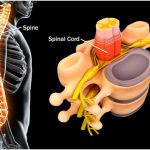When it comes to organs of our body, all we care about is our heart, brain, kidneys, spinal cord, and sometimes eyes. We consider them doing the most important functions of our body but we don’t realize that there are so many other organs that perform myriad as well as very important functions that ensure our survival. One such organ is the liver. The liver performs functions as diverse as detoxifying the alcohol that you put on weekends to relieve yourself to the digestion of the bad fats that you gobble up to producing the members of the army that is central to the functioning of everything in the body, the blood cells. Apart from these, the liver performs a metabolic function, excretory function, synthesis, and storage function. It produces the heat necessary for sustaining the normal functions of the body and also removes the dead red blood cells. It also has an alien property- it is the only internal human organ that can regenerate itself!!
In our stressful lives, we many times forget to take care of this very important organ. It is said that one can survive a failed heart but it is very difficult to survive a failed liver. When the liver is damaged to an extent that it is no longer able to regenerate itself, a liver transplant is mandatory for survival. Biliary atresia in children is usually the culprit that necessitates a liver transplant. In this pathology, the bile ducts that transport bile from the liver to the gall bladder are underdeveloped. Reconstructive surgery in the initial few months of life can be done to correct this condition; however, some children go on to develop deep jaundice and eventually liver failure. The most frequent cause of the liver disease that leads to a need for liver transplant in adults is chronic Hepatitis C infection. Other conditions that can cause liver failure in adults are Hepatitis B virus, non-alcoholic fatty liver disease, primary biliary cirrhosis, and primary sclerosing cholangitis. The other reason is the development of cancer- hepatoblastoma in children and hepatocellular carcinoma in adults. Rarely overuse of drugs that cause liver damage can lead to acute liver failure prompting a liver transplant. The most common and easily available drug that has this damaging potential is paracetamol.
Liver transplantation is a very complex procedure requiring very careful harvesting of the donor organ and meticulous implantation into the recipient. Hence it is a highly regulated procedure carried out only in a few medical centers licensed for the same. The liver is taken either from the cadaver (dead body) or is donated by a healthy living person. In the latter case, the unique ability of the liver to regenerate is exploited. It is known as living donor liver transplantation (LDLT) and the first successful transplant was first carried out in 1989 by Dr. Silvano Raia at the University of Sao Paulo. This surgery is technically more demanding than the one carried out on a dead body and carries some risks for the donor which is around 10%. The common problems that occur are biliary fistula, gastric stasis, and infections and are more common after the removal of the right lobe of the liver. The death of the donor after the surgery is very rare.
Typically in an LDLT procedure, almost 55-70% of the liver which consists of the right lobe is removed from the healthy living donor. The right lobe is usually used for adult transplants and in the case of pediatric patients, the left part is used. The liver regenerates to its full volume in around 4-6 weeks. It is possible to remove almost 70% of the liver without causing any significant problems to the donor.
WHAT MAKES A LIVER TRANSPLANT EASY?
Liver transplant, despite being a very complex procedure, demands very few things from the donor.
The requirements of a donor for a liver transplant are relatively simple. The liver is divided into different segments and each segment has its vascular supply. This makes resection of a part of the liver possible without affecting the other parts. For becoming a candidate for a liver transplant, the donor should:
- Be healthy, physically fit and free from other diseases like hypertension, diabetes, liver diseases, and heart diseases.
- Be between 20 years and 60 years old (18-60 in some countries).
- Have a close relationship with the patient at a personal level.
- Have the same blood group as the recipient.
- Have weight similar or more than the recipient.
The requirements of a donor in India are:
- The age of the donor should be in the range of 18 years to 55 years.
- The blood group of the donor should be compatible with the recipient.
- The donor should be a 1st or 2nd-degree relative. In case the donor is not a relative, a Government committee is formed to assess the case.
- The donor should be healthy and without any addictions.
- Detailed systemic tests should be conducted on the donor to assess his/her physical fitness for the procedure.
- A triphasic CT scan of the abdomen to assess fatty infiltration in donor liver parenchyma, identifying normal and variant hepatic vascular anatomy, and estimating segmental liver volumes are done.
- The donor should have a graft-to-recipient ratio of 0.8 which is considered ideal.
- The biliary tree of the donor should be assessed by Magnetic Resonance Cholangiopancreatography (MRCP).
The simple requirements of a donor and the regenerating power of the liver make this transplant a rather easier one and recently, the success rates of this transplant have gone very up. The use of modern immunosuppressant drugs is one of the reasons for increasing success statistics. Approximately 800-1000 liver transplant surgeries are performed in India annually.
WHAT MAKES A LIVER TRANSPLANT DIFFICULT?
Despite simple requirements for the donor, the availability of healthy livers is very scarce. Also, healthy people are not always ready to donate their part of the liver as there might be severe complications impacting the overall health in the long run. The patients have to get a certificate that they need a liver transplant as the last resort for their treatment. Then they need to enroll in the government portal and wait for their turn for the availability of liver. Many patients need to be on medications and cannot live a normal life while waiting for a liver transplant. Unfortunately, some of them die waiting for their turn to come. But now advances in the medical field have decreased morbidity and there is almost no mortality in liver donors, especially ones that donate the right lobe.
CONCLUSION:
The liver is a very important organ performing some of the most important functions in our body; yet is underestimated by people. Alcohol and certain drugs damage the liver gradually causing fatty liver, liver cirrhosis, and eventually end-stage liver disease for which liver transplant is the only option. And now in this pandemic situation, things have become tougher. The government has come up with a different set of guidelines for liver transplantation procedures in the pandemic situation, complicating things further. The advances in the medical field coupled with the unique features of the liver as a regenerative organ make liver transplant a viable option. But the ground reality is the availability of livers in response to its demand is quite less and the patients have to wait a long time before a liver can be made available. Thus the most important part is to take ample care of the liver. Remember, it is not only that a healthy heart is a way to a healthy life; a healthy liver is equally important!!













